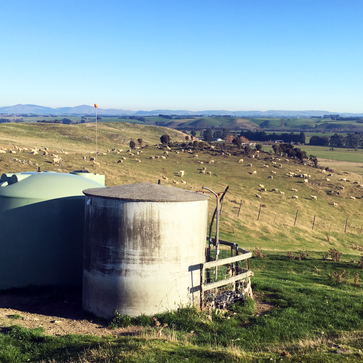Your Cart is Empty
A rural water scheme in the Clutha district has been trialling Waterwatch T35 tank sensors on each tank on their scheme. 40 tanks across the district are monitored for compliance and to ensure each customer is receiving their allocated supply.
The water for the scheme is pumped from the Clutha river and treated before going to customers.

The local council provides regular supplies of water for both household consumption and stock drinking water in the district. The supply is restricted to ensure everyone gets their fair allotment of water. A set number of water units (1 unit = 1000L) flows into each tank slowly over a 24 hour period. 30% of the water produced is for domestic consumption with the rest being largely used for stock water.
The council is responsible for ensuring each consumer’s daily allocation is available. This is sometimes contracted to 3 Waters maintenance providers.
The Waterwatch account is managed by the suppliers of the scheme, but individual tanks can also be shared with the property owners, farmers and staff. The scheme providers can see how much water each tank receives and how much they use. Historical data linked to each sensor can be used to get an idea of seasonal demand.

Leaks and broken pipes across the water supply scheme can be easily identified when tank levels are dropping significantly or not refilling over a period of time. These faults can be found remotely before the tank runs dry. Early identification reduces the risk of damages and unhappy customers. A response/ maintenance team can address the problem in a timely manner, rather than when it's already too late.
Water theft and tinkering with supply restrictors can be detrimental to the scheme because if one person gets more water, someone else is missing out. Consistent monitoring and regular audits eliminate unfair distribution.
Sensors are installed on both concrete and plastic tanks of different sizes. Some measurements are recorded upon installation to indicate both the percentage full and volume in litres for each tank. The Waterwatch Live map view gives a quick overview of the scheme status, then each sensor page gives more information on the tank itself.
The data produced by Waterwatch sensors can either be used with the Waterwatch Live software or integrated with existing platforms. Data can also be easily exported for proof of compliance.











